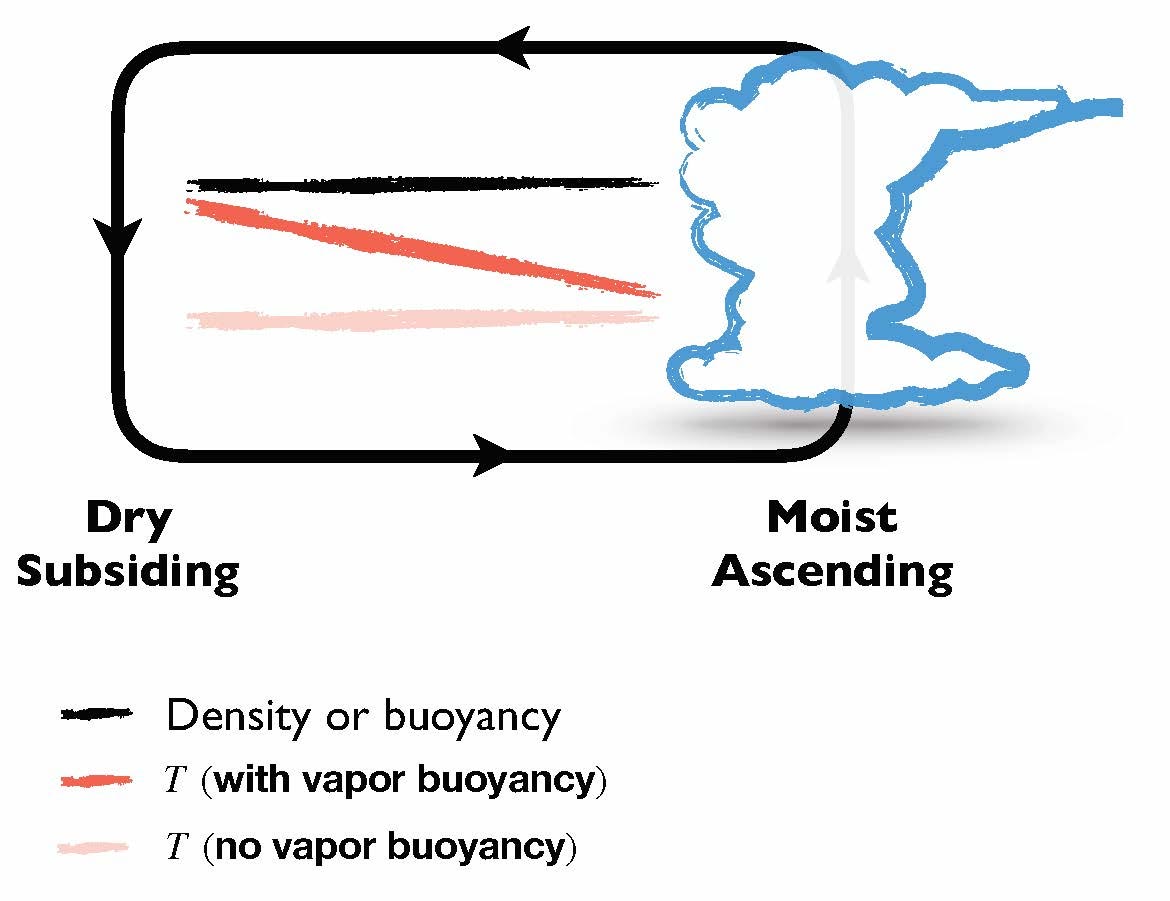This graph illustrates the buoyancy effect of vapor, in which cold, moist air rises because it is lighter than dry air. Credit: Da Yang/UC Davis
The lightness of water vapor dampens global warming in the tropics.
Conventional knowledge holds that warm air rises while cold air sinks. But a study from the University of California, Davis found that in the tropical atmosphere, cold air rises due to an overlooked effect – the lightness of water vapour. This effect helps stabilize tropical climates and cushion some of the impacts of global warming.
The study, published today (May 6, 2020) in the journal Scientists progressis among the first to show the profound implications of water vapor buoyancy on Earth’s climate and energy balance.
The study found that the lightness of water vapor increases Earth’s thermal emissions by about 1 to 3 watts per square meter above the tropics. This value compares to the amount of energy captured by doubling the carbon dioxide in the atmosphere.
“It is well known that water vapor is an important greenhouse gas that warms the planet,” said lead author Da Yang, assistant professor of atmospheric sciences at UC Davis and research associate. at Lawrence Berkeley National Laboratory. “But on the other hand, water vapor has a buoyancy effect which helps to release heat from the atmosphere into space and reduce the degree of warming. Without this lightness of water vapor, global warming would be even worse.
Moist air is lighter than dry air under the same temperature and pressure conditions. This is called the vapor buoyancy effect. This study found that this effect allows cold, moist air to rise, forming clouds and thunderstorms in the Earth’s tropics. Meanwhile, warm, dry air descends into clear skies. The Earth’s atmosphere then emits more energy into space than it otherwise would without the buoyancy of the vapor.
The study found that the lightness of water vapor increases Earth’s thermal emissions by about 1 to 3 watts per square meter above the tropics. This value compares to the amount of energy captured by doubling the carbon dioxide in the atmosphere. The authors’ calculations further suggest that the radiative effects of vapor buoyancy increase exponentially with global warming.
A better understanding of the buoyancy effect of vapor and its stabilizing role in the tropics can also improve cloud and thunderstorm simulations, as well as climate models, according to the study.
“Now that we understand how light water regulates tropical climate, we plan to investigate whether global climate models accurately represent this effect,” said study lead author Seth Seidel, a graduate student at UC Davis.
Reference: “Light Water Vapor Helps Stabilize Tropical Climate” by Seth D. Seidel and Da Yang, May 6, 2020, Scientists progress.
DOI: 10.1126/sciadv.aba1951
The study was funded by the David and Lucille Packard Foundation and the US Department of Energy.




